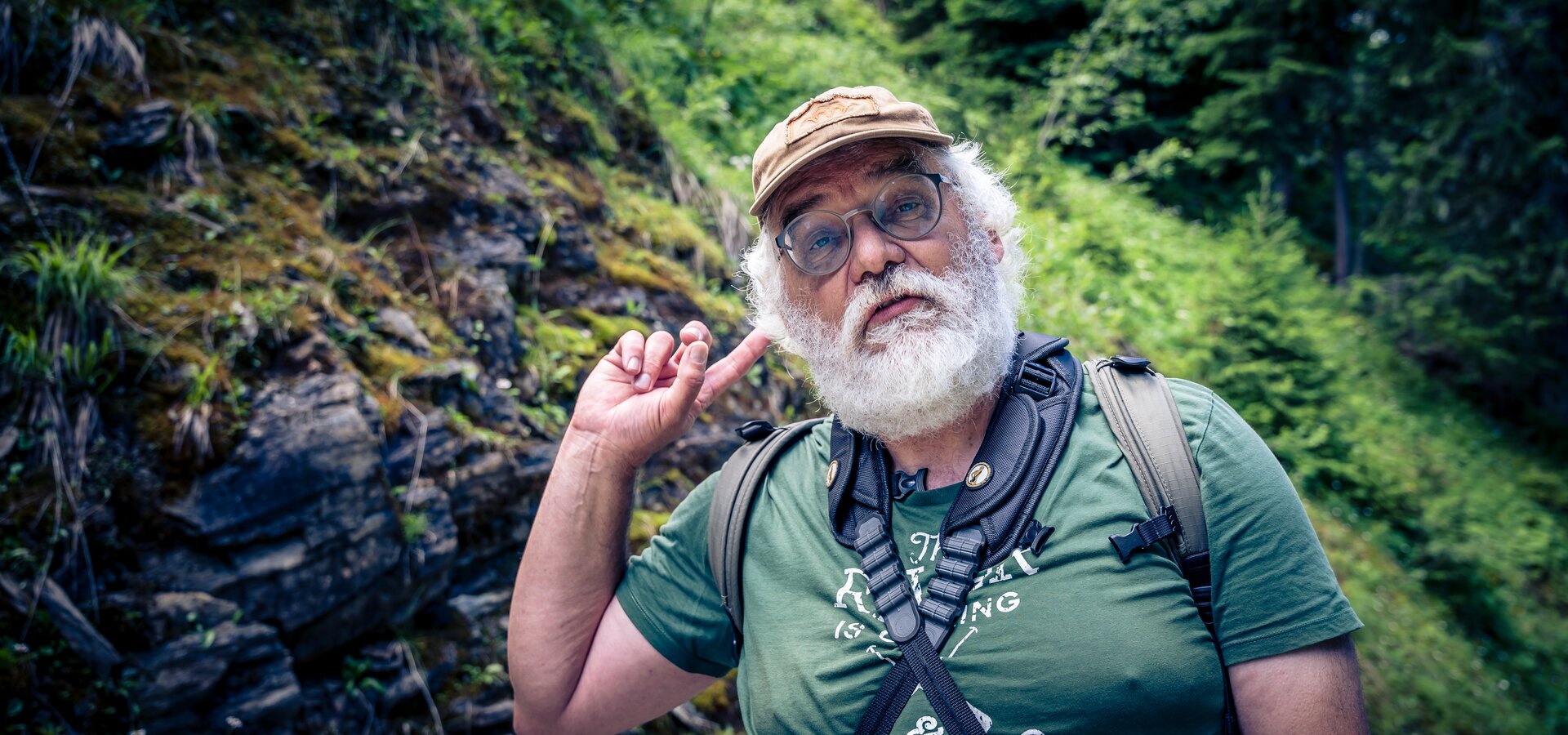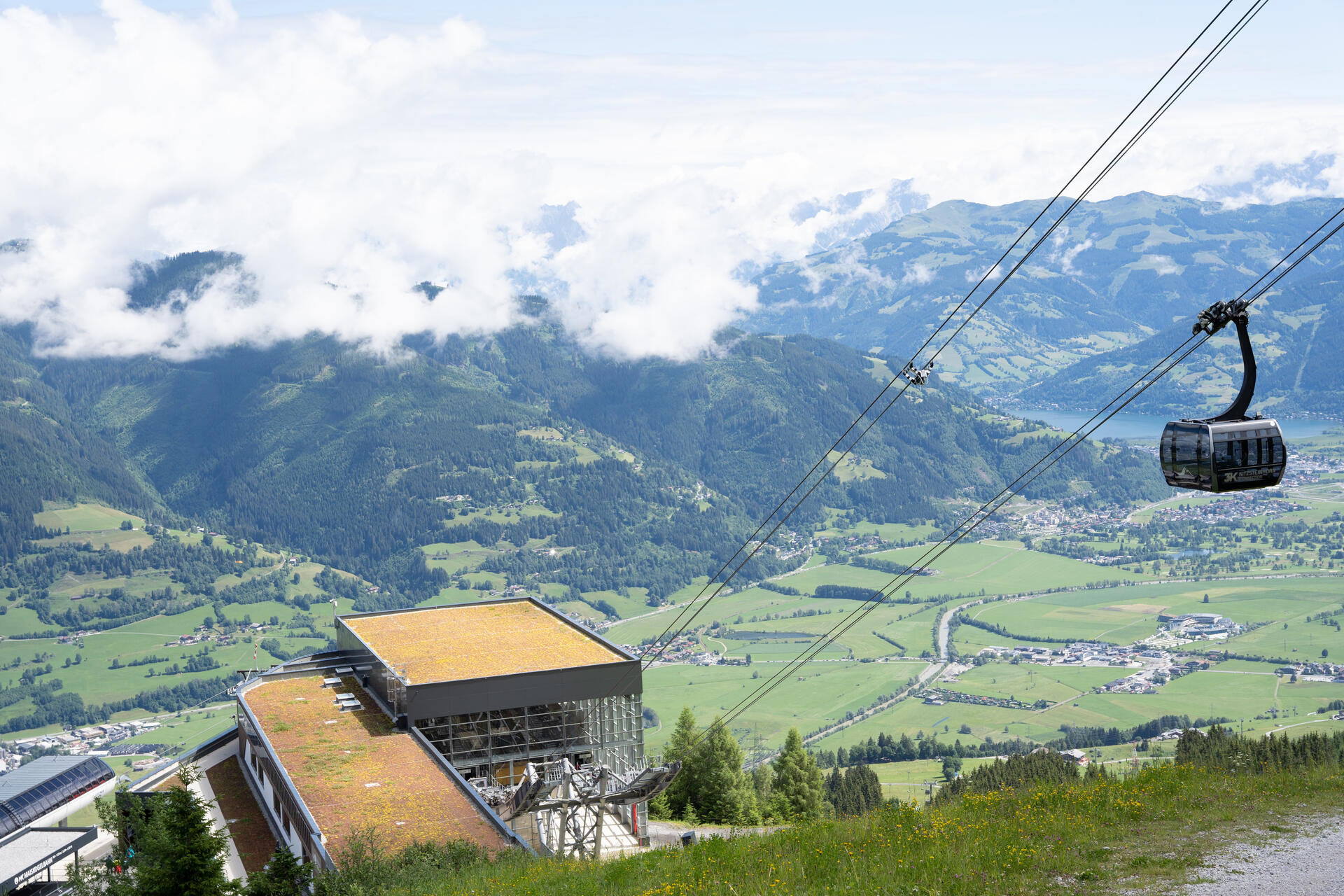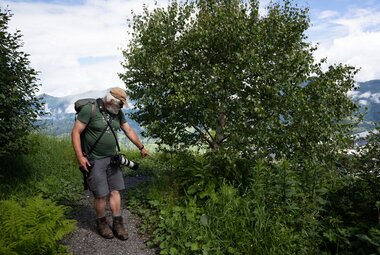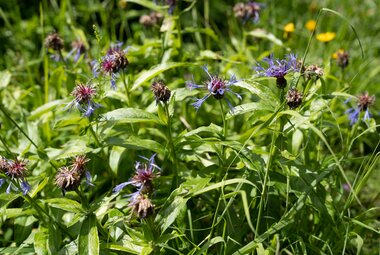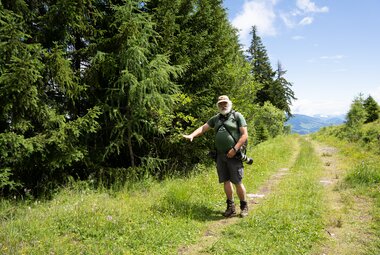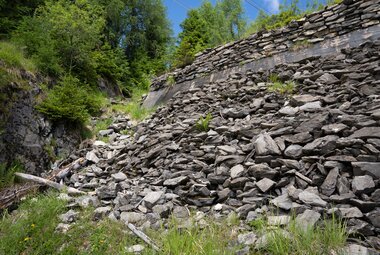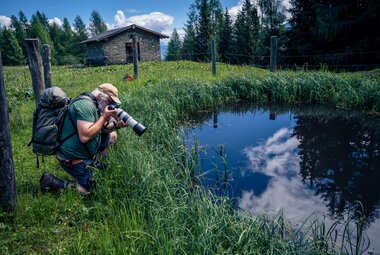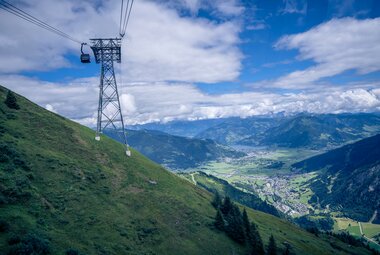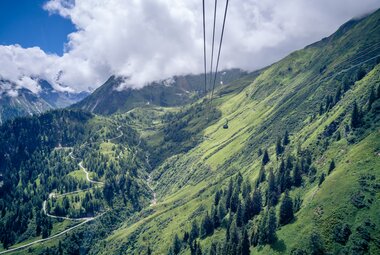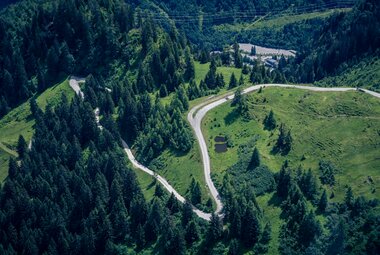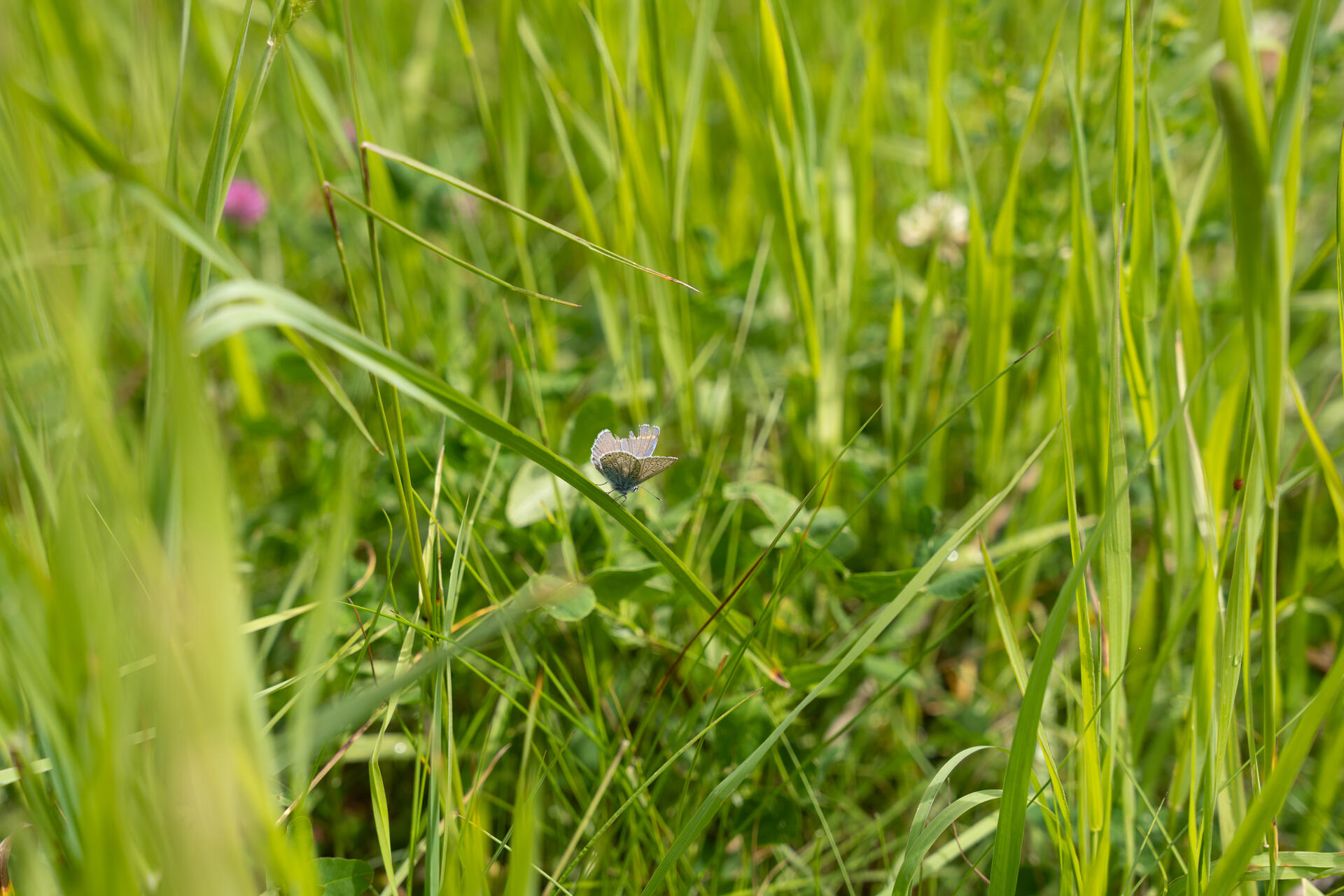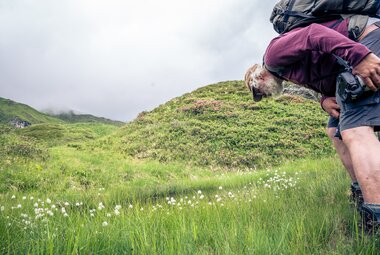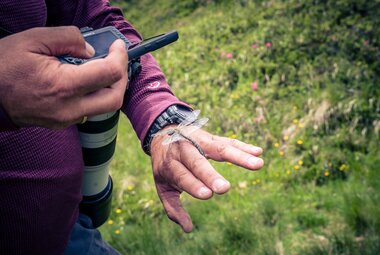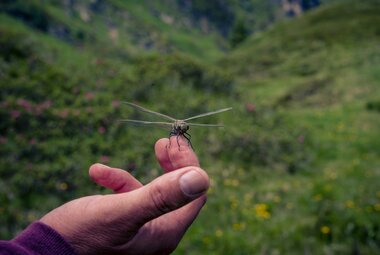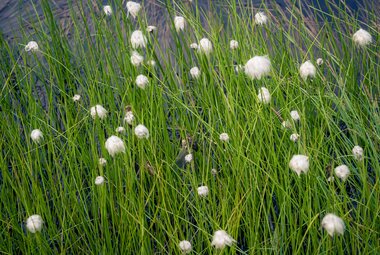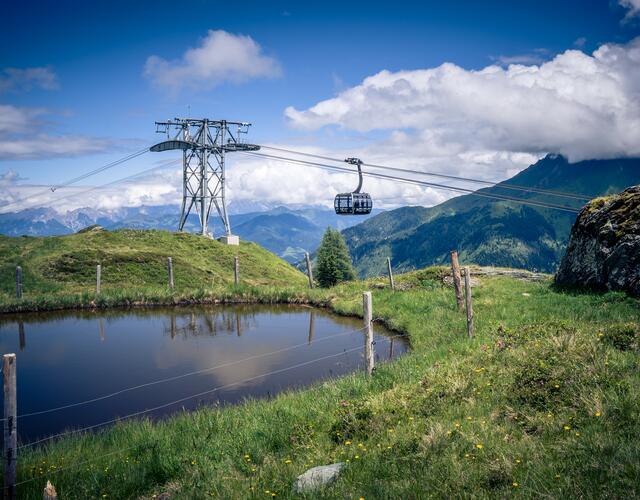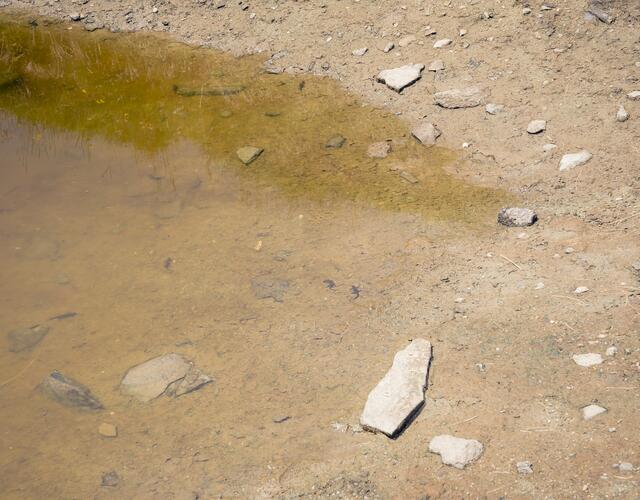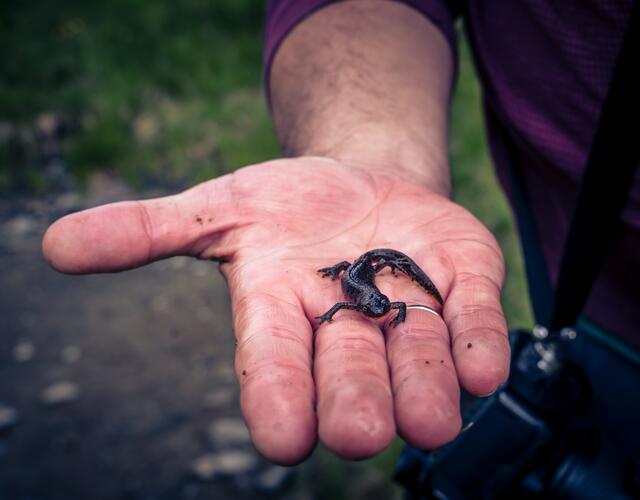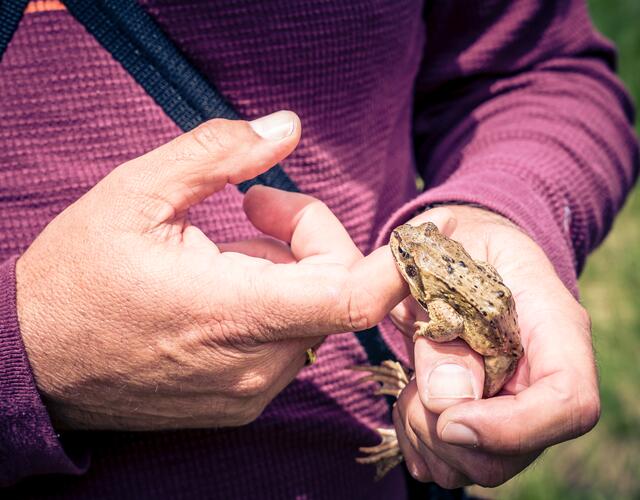Ecological construction support
You can't make an omelet without breaking eggs, as you can't build something without moving soil. In order to conduct construction work producing as little effect on flora and fauna as possible, ecological construction support has been assisting projects on the Kitzsteinhorn for many years. Martin Kyek is a biologist and specialist in reptiles and amphibians from the Institute for Ecology. Together, we take a look behind the scenes of renaturalization measures taken after constructing the 3K K-onnection.
"Nature conservation has always been dear to my heart, especially frogs have intrigued me from early childhood", a deep bass voice rings out from behind the white full beard. The tall man, with a warm smile in his eyes, carries a massive backpack peeking out from behind his shoulders, cameras with long telephoto lenses dangle on the left and right side of his body. That's Martin Kyek, Institute of Ecology employee and years-long companion of construction projects on the Kitzsteinhorn. Having mapped frog spawn sites in the Pinzgau region between the town of Hollersbach and Kaprun during his studies of zoology, he knows the area like the back of his hand.
While we are comfortably ascending with the MK Maiskogelbahn cable car, Martin tells us about his partnership with the Kitzsteinhorn: "The Institute for Ecology has been brought on board by CEO Norbert Karlsboeck for assistance in cable car construction and slope intervention in the 1990s. Together with the project team, we work towards sustainable, future-oriented and ecological solutions that reduce the impact of construction projects to a minimum." Ecological construction support is mandatory in Austria. It operates as part of the Nature Conservation Regulator and controls, whether the imposed measures documented in the authorization are adopted in accordance with legal requirements.
Collecting frogs & snakes
The last milestone in the cooperation has been the generational project MK + 3K K-onnection. Extensive construction work in the area of stations and pylons made it necessary to relocate amphibians that were living there. "Common frogs, alpine newts, mountain lizards, common European adders and slow worms move on the ground. They can't just take off like birds and fly to the other side of the valley. Therefore, before even starting construction work, we collected the amphibians and reptiles with drift fences, buckets and snake traps to temporarily relocate them in nearby habitats. Over the course of construction, spawning sites have been made to restore and even enhance their habitat", Martin explains.
As project partner, I’m on nature's side!
After constructions are completed, berms are appropriately redesigned and planted with grasses, flowers, trees and bushes, as can be seen above the top station. The hiking trail wends its way through renaturalized areas. The biologist looks more than satisfied with the lush vegetation. Our stroll is accompanied by the clicking sound of a camera; no butterfly, no thistle and no bird remains undetected. "Each photograph is automatically tagged with a GPS marker and uploaded to an international database that documents biodiversity", Martin explains, while bringing a little common blue butterfly to my attention.
Flying jackhammer
"Listen! Can you hear him?", he asks excitedly. I'm hearing a bird chirping loudly. "That's a wren. Although being the smallest of our songbirds, his chirps have the sound pressure of a jackhammer! ... Here, in between the stones, adders could be warming themselves in the sun." We reach one of ten newly designed spawning sites and the little pond looks as if it had always been here. Nestled amid high sedge and framed by a fence that provides protection from cows, it's the ideal habitat for frogs, newts and insects. The amphibians expert scans the shallow shore for tadpoles and newts with infectious enthusiasm. "With planting grasses, bushes etc. around the pond, I set the wheels in motion. It's fascinating to see how nature has taken over ever since. In the end, we'll get the most beautiful and natural result."
Working with living systems is not a job to me, but a challenge. For the system that cares for the little newt is the same system that cares for you and me. Each member of a construction project has to internalize that – from the CEO over the operations manager to the digger driver.
The frog whisperer
We leave the pond behind us, head back to the top station and continue our ascent to the Landwiedboden area with the 3K K-onnection. The ride in the modern gondolas provides not only a breathtaking view of the high-alpine surrounding but you also a clear view of numerous other compensatory ponds that Martin Kyek and his colleagues, Thomas Ruecker and Helmut Wittman, have created over the course of several projects. We visit a slightly hidden spawning site and are happy to find plenty of tadpoles, newts and frogs as well as a newly hatched common hawker in the high grass at the pond's shoreline. The scientist lovingly and carefully inspects and documents the animals. He patiently answers all of my questions. I learn how a male frog differs from a female frog, how newts can live under water, how common adder and grass snake differ, why a dragonfly doesn't open its wings after hatching but has to "warm up" on Martin's hand for some time before.
One can clearly see the biologist's dedication to amphibians and those, on the other hand, seem to feel that love, for they sit undisturbed in Martin's hands. The male grass frog even seems to relax on the hovering platform. "It's nice to see that animals find an appropriate habitat here. I enjoy coming up here to see the sustainable success after finishing a project." He cautiously deposits the frog at the shoreline who says goodbye to us with a splash – jumping into the living room that has been made just for him on the Kitzsteinhorn.

